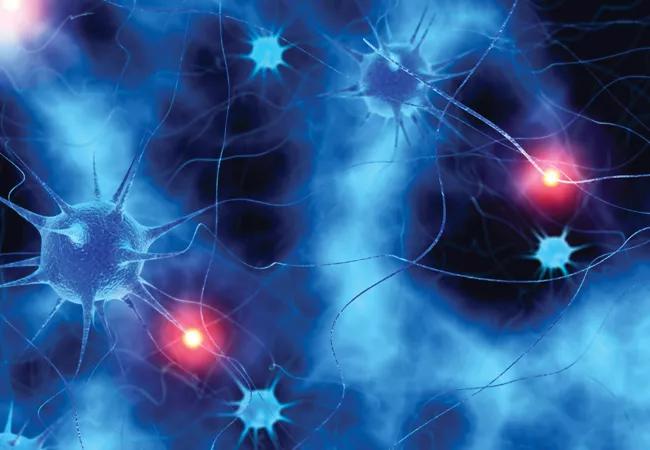Opioid Prescriptions Drop; New CDC Guidelines Published

By Richard W. Rosenquist, MD
Cleveland Clinic is a non-profit academic medical center. Advertising on our site helps support our mission. We do not endorse non-Cleveland Clinic products or services. Policy
According to the United Nations Office on Drugs and Crime, the U.S. has less than 5 percent of the world population, but uses about 80 percent of prescription opioids. On July 20, Richard Rosenquist, MD, Cleveland Clinic Chairman of the Department of Pain Management, was part of a panel discussion on “Public and Private Solutions to America’s Opioid Crisis,” hosted by JobsOhio and the Cleveland 2016 Host Committee of the Republican National Convention. The panel included Ohio Sen. Rob Portman, Anthem Blue Cross and Blue Shield of Ohio President Erin Hoeflinger, Ohio Department of Mental Health and Addiction Services Director Tracy Plouck and Ohio Attorney General Mike DeWine.
During the discussion, Sen. Portman reported that on July 13, the Senate had voted to pass a bill that targets the nation’s opioid epidemic.
Here, Dr. Rosenquist gives an overview of his part of the discussion.
Two years ago, I reported that pain specialists had dramatically reduced use of opioids for noncancer-related chronic pain and explained how we address dependency.
These efforts, along with the new CDC Guideline for Prescribing Opioids for Chronic Pain issued in March, seem to be paying off, with a reported 12 to 18 percent decrease in opioid prescriptions nationally (see “Opioid Prescriptions Drop for First Time in Two Decades,” New York Times, May 21, 2016). Yet overdoses of prescription opioids, fentanyl and heroin continue to claim far too many lives.
More than 165,000 people died from an overdose related to opioid pain medication in the United States (from 1999 to 2014), according to the CDC. And while death rates for leading causes of death such as heart disease and cancer have decreased substantially in the past decade, the death rate associated with opioid pain medication has increased markedly.
The opioid epidemic is the result of a confluence of factors. In the late 1980s, we saw a push to destigmatize and promote the use of opioids as a means of treating chronic pain. At the same time, several small studies – now discredited – claimed that opioids relieved chronic pain without a significant risk of addiction. In parallel, a large pharmaceutical manufacturer began a major sales effort in the 1990s for a sustained-release formulation of oxycodone. The effectiveness of this medication is now being questioned on multiple fronts as well.
In the mid-1990s, the idea emerged that pain should be considered the fifth vital sign. We asked about pain at every visit, reducing the pain score became a major objective and we prescribed medication, including opioids for minor bumps and bruises. As demand for opioids began to increase, pill mills operated by unscrupulous clinicians cropped up and provided ready access to large amounts of highly addictive drugs in exchange for cash payments. In more recent years, reduced payments for clinical care and good payments for laboratory testing have created perverse financial incentives to prescribe opioids and conduct urine drug screening.
In addition, the problem has been exacerbated by a medical education system that failed to teach clinicians how to properly evaluate chronic pain, appropriately prescribe pain medications or use nonopioid analgesic approaches effectively.
We began to see physical and psychological dependence on these drugs, and ironically, not much improvement in pain control. Scientific evidence has now caught up with the expansion of opioid use and we know that over the long-term, opioids offer poor pain relief. On average, patients report a 20 to 30 percent reduction in pain. Not 50 or 80 percent, and certainly not 100 percent. In my own career, I can think of only one person for whom I prescribed relatively high-dose opiates whose pain was significantly reduced and was able to return to work in their own career. Only a small subset of patients tends to do really well on opioids for chronic noncancer pain, and they usually take small doses on an intermittent basis.
The result of all of these factors was a meteoric rise in addiction, abuse and overdose, as well as other side effects of chronic opioid use – constipation, nausea, endocrine abnormalities, osteoporosis, sedation, depression, immunosuppression, opioid-induced hyperalgesia and death.
There is hope, and now evidence, that the epidemic is starting to slow down. Public awareness about opioid abuse has increased. At the Federal and state government levels, we see new pain-related legislation being introduced.
Ohio, one of the hotbeds of opioid abuse, has been among the most progressive states in terms of action. The Governor’s Cabinet Opiate Action Team has published guidelines, and we have one of the country’s best prescription drug-monitoring programs. The state has closed down a number of bad actors and continues to investigate others. There has also been a marked increase in the amount of education available to address opioid issues in medical schools and for physician and nonphysician providers in practice to provide them with appropriate guidance for prescribing opioids for cancer and noncancer-related pain.
The CDC has provided a rational and reasonable set of guidelines. The guidelines promote the use of opioids for short periods (for instance a two- or three-day course versus a 30-day prescription for an ankle sprain), spell out appropriate indications, require checking online databases regarding patients’ other prescriptions (especially benzodiazepines, other narcotics and pain medications) and recommend reduced dosages. The CDC’s checklist for prescribing opioids for chronic pain is a helpful tool for primary care clinicians.
At Cleveland Clinic we recommend looking for a history of addiction, alcoholism or suicide attempts prior to prescribing. If we decide to prescribe an opioid, we require the patient sign a “consent for opioid management” form that outlines risks, spells out refill procedures, and explains urine drug screening requirements and more.
I never expected to spend time on a daily basis explaining to people why I am not going to prescribe narcotic pain medication for them. I encourage colleagues, both primary care and specialists, who encounter patients requesting prescriptions for opioids to not be afraid to say no. Don’t say yes when you want to say no.
On the other hand, patients in pain need help. To assess the impact of pain, I rarely ask the patient directly about his or her pain score. Instead I focus on function. I ask the patient if he is able to engage in activities of daily living, social activities or work. Is she getting up and moving? Is he able to do things with friends and family, or work around the house?
If a patient is not functioning well, we offer comprehensive evaluations to develop a clear diagnosis whenever possible and multimodality pain treatment programs that focus on improving function.
If there is evidence of dependency or addiction, we offer safe tapering and additional recovery approaches through the Cleveland Clinic Alcohol and Drug Rehabilitation Center. In addition, the Chronic Pain Rehabilitation Program is designed to reduce pain and chemical dependency and improve function. Alternative pain management strategies often involve physical therapy, psychological therapy, medical management and other approaches. The latter may include nerve blocks, injections, neuromodulation approaches such as high-frequency spinal cord or peripheral nerve stimulation or alternative approaches such as acupuncture or osteopathic manipulation medicine.
Still, if someone with diabetic neuropathy is 150 pounds overweight and doing little to control his blood sugar, chances are slim that any medication or other strategy will effectively control his pain. For any pain management program to work, patients need to be engaged in their own health and we need to work in tandem to achieve a good outcome.
Dr. Rosenquist is Chairman, Department of Pain Management. He can be reached at rosenqr@ccf.org or 216.445.8388.

Program enhances cooperation between traditional and non-pharmacologic care

Pain specialists can play a role in identifying surgical candidates

Clinical judgment is foundational to appropriately prescribing

The device is a less invasive alternative for patients who are struggle with chronic pain

The Four Pillar Project provides physicians with evidence-based talking points to quickly identify problem areas and educate patients to optimize important aspects of their health.

When conservative approaches don’t work, it may be time to turn to sacroplasty

Fourth iteration of the guidelines focuses on high-risk patient identification and evidence on newer drugs

It is a lifestyle commitment that can minimize pain and improve lives